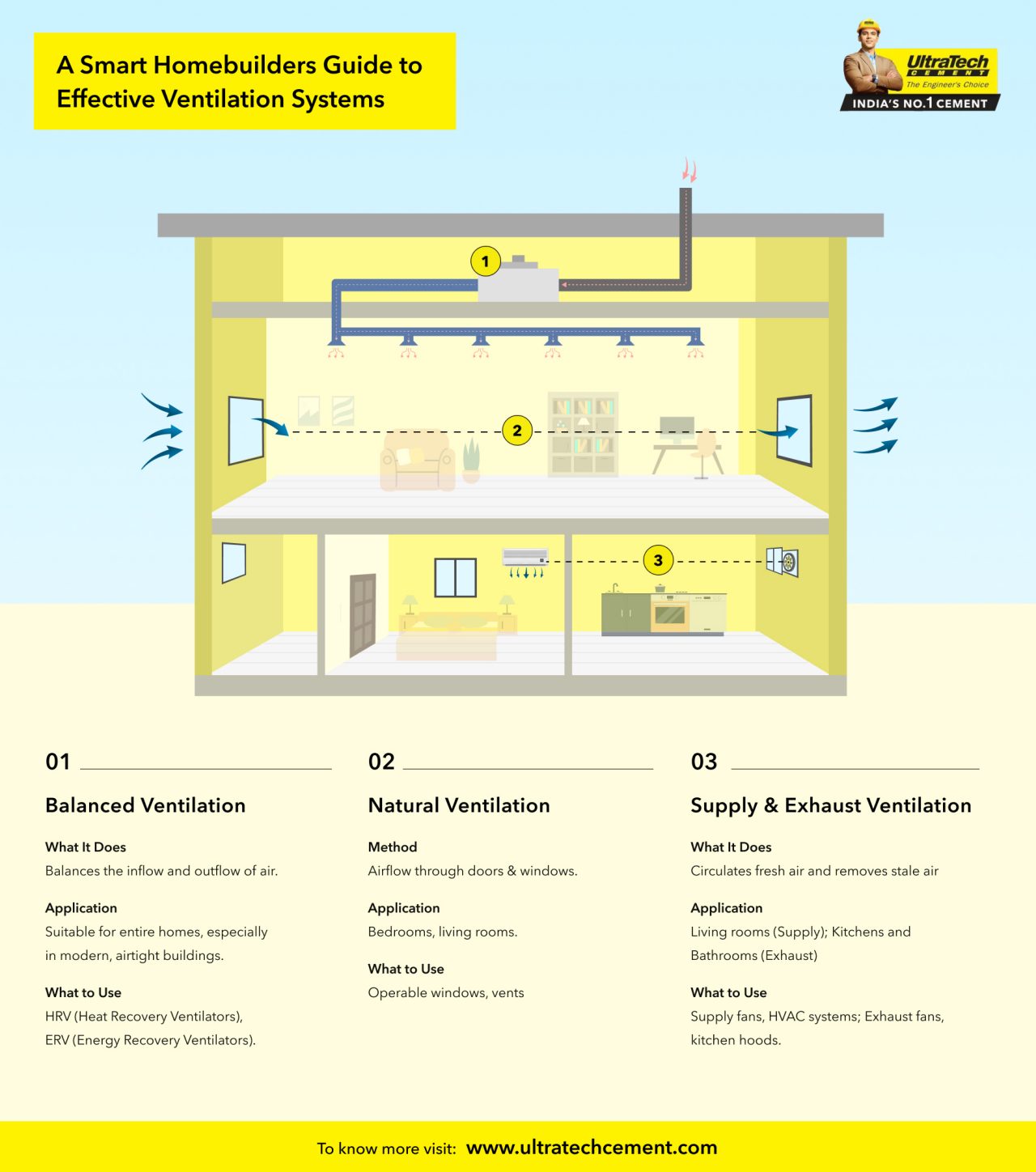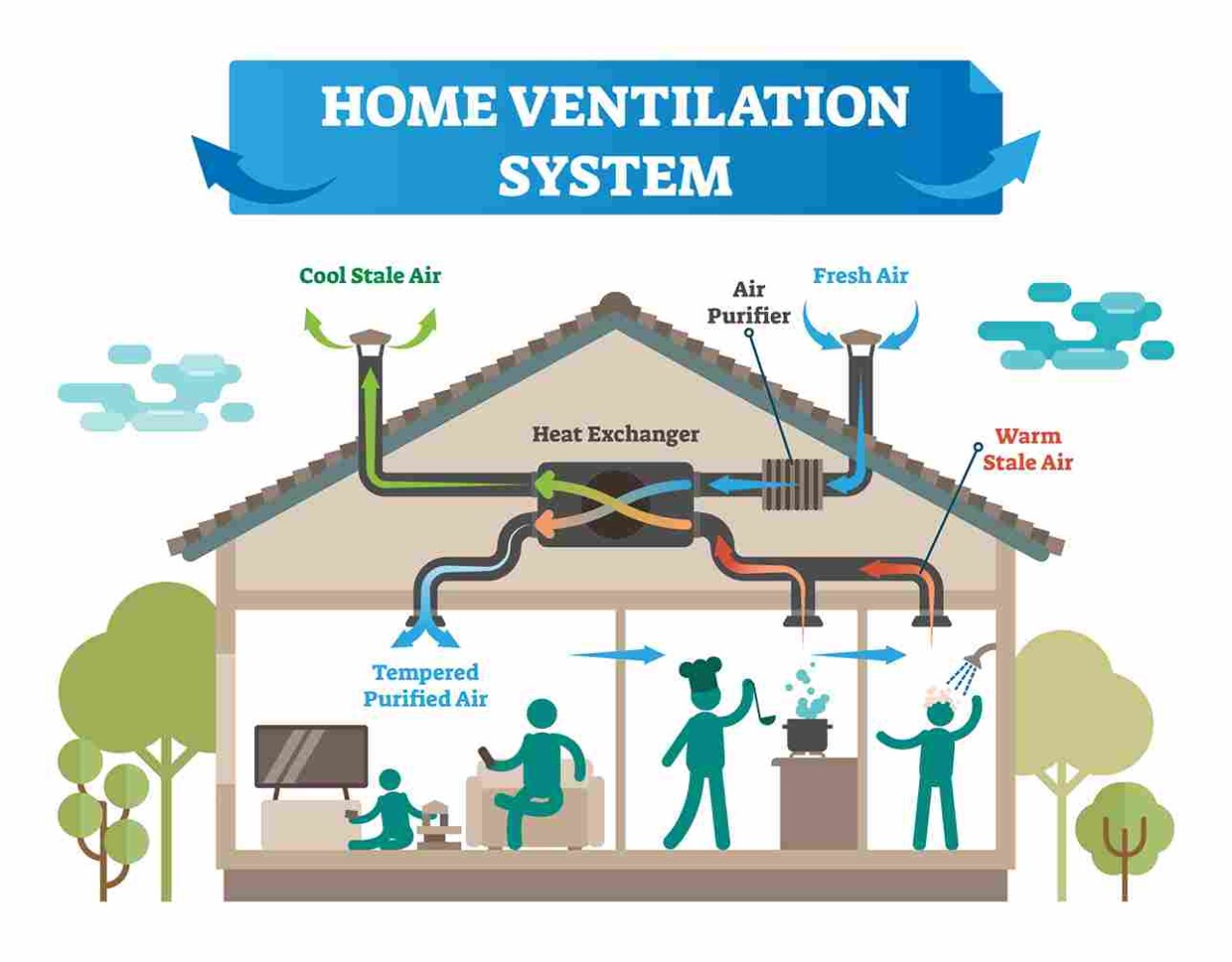The Complete Beginner’s Guide to Home Ventilation Melbourne
Understanding the Value of Home Ventilation for a Healthier Living Atmosphere
Home ventilation plays a crucial role in preserving a healthy and balanced living setting. It facilitates the exchange of outside and indoor air, which is necessary for boosting air top quality. Without correct air flow, homes can come to be breeding grounds for irritants and toxins. The repercussions of insufficient air flow can be considerable. This brings up the inquiry of how homeowners can effectively implement air flow approaches to guard their wellness and wellness. Comprehending these methods is crucial.

The Basics of Home Ventilation
Home ventilation functions as a crucial component of interior air quality and comfort. It involves the process of exchanging stale indoor air with fresh outdoor air, thereby reducing moisture and regulating temperature level. Correct ventilation systems can include all-natural approaches, such as open home windows and vents, along with mechanical systems, such as exhaust followers and air exchangers. Efficient home ventilation aids prevent concerns like interior mold and mildew growth and the buildup of hazardous particles. It also boosts total power effectiveness, as well-ventilated rooms can preserve comfortable temperatures with less reliance on heating and cooling down systems. Recognizing the basics of home ventilation is essential for homeowners seeking to produce a healthier living environment for themselves and their households.

Typical Sources of Indoor Air Contamination

Although lots of may not recognize it, indoor air pollution can originate from numerous resources within a house. Usual contributors include unpredictable natural substances (VOCs) released from paints, solvents, and cleansing items. House appliances, such as gas ranges and fireplaces, can launch harmful gases like carbon monoxide gas and nitrogen dioxide. In addition, mold and mold prosper in damp locations, launching spores that impact air quality. Animal dander, allergen, and plant pollen can collect inside your home, further aggravating pollution levels. Smoking inside your home produces toxic chemicals that remain in the air. Lastly, building products, including asbestos and formaldehyde, can off-gas hazardous substances. Recognizing these resources is important for keeping a healthier interior atmosphere and promoting reliable ventilation techniques.
Wellness Consequences of Poor Air Flow
Interior air contamination can have substantial health and wellness effects, particularly when air flow is poor. Poor ventilation can lead to the accumulation of damaging toxins, such as unstable natural compounds, mold, and particle matter. This build-up might result in respiratory system issues, consisting of bronchial asthma, allergies, and chronic obstructive lung disease. People may experience symptoms like migraines, tiredness, and irritation of the eyes, nose, and throat. At risk populations, such as youngsters and the elderly, go to higher danger for extreme health effects. Long-lasting exposure to inadequately aerated settings can likewise add to much more significant problems, including cardio diseases. Subsequently, ensuring correct air flow is necessary for preserving a healthy and balanced living setting and decreasing the risk of wellness problems linked with interior air contamination.
Effective Air Flow Strategies for Your Home
Proper ventilation is important for maintaining a healthy and balanced interior atmosphere, and executing effective strategies can significantly improve air top quality. House owners can start by making certain that exhaust followers are installed in washrooms and cooking areas to get rid of excess dampness and smells. Opening home windows frequently allows fresh air to circulate, specifically during mild weather. Additionally, making use of air cleansers with HEPA filters can help capture air-borne contaminants. For homes with heating and cooling systems, preserving heating and cooling systems and transforming filters regularly is important for peak performance. Including natural ventilation strategies, such as cross-ventilation, can also enhance air movement. Sealing any type of leakages in doors and home windows avoids undesirable drafts, which can interrupt regulated air movement, ultimately leading to enhanced interior air high quality and comfort.
Keeping Ideal Air High Quality Year-Round
To maintain suitable air top quality year-round, homeowners must adopt a proactive approach to managing navigate to these guys their interior environment. Frequently keeping track of interior air high quality is vital; this consists of monitoring for toxins such as dirt, mold and mildew, and unpredictable natural compounds (VOCs) Carrying out reliable ventilation systems, such as exhaust fans and air purifiers, can considerably minimize airborne impurities. In addition, regular upkeep of a/c systems guarantees peak efficiency and air blood circulation. Homeowners should also think about moisture levels, as excessive dampness can lead to mold growth. Seasonal adjustments may demand adjustments in air flow techniques to fit differing outside air high quality. By focusing on these techniques, homeowners can create a much healthier home, promoting overall health for all owners throughout the year.
Regularly Asked Inquiries
Just How Can I Tell if My Home Needs Much Better Ventilation?
To establish if a home needs better air flow, one ought to observe indicators such as consistent humidity, mold and mildew growth, stuffy smells, condensation on windows, or enhanced allergy signs and symptoms, suggesting poor air movement and potentially inadequate interior air quality.
What Are the Indicators of Poor Indoor Air High Quality?

Can Houseplants Improve Indoor Air High Quality Efficiently?
The efficiency of houseplants in improving interior air top quality is discussed. While some studies recommend they can soak up contaminants and generate oxygen, their general impact might be very little contrasted to proper air flow and air purification systems.
How Often Should I Change My Air Filters?
The regularity of air filter adjustments typically depends on use and filter type. Normally, it is advised to replace filters every 3 months, though households with allergies or pet dogs may require even more constant adjustments for suitable performance.
Exist Any Kind Of Specific Ventilation Equipments for Allergy Sufferers?
Lots of ventilation systems, such as Resources HEPA-filtered devices, successfully reduce irritants in the air. Home Ventilation Melbourne. These systems trap dirt, family pet, and pollen dander, supplying allergic reaction victims with a cleaner, healthier indoor atmosphere while taking care of air high quality effectively
It helps with the exchange of indoor and exterior air, which is essential for improving air high quality. Home air flow offers as a crucial element of interior air top quality and comfort. It includes the procedure of exchanging stagnant interior air with fresh outside air, thereby decreasing moisture and controlling temperature level. Interior air contamination can have considerable health and wellness ramifications, particularly when ventilation is poor. Proper air flow is vital for keeping a healthy and balanced interior atmosphere, and executing effective strategies can considerably enhance air high quality.